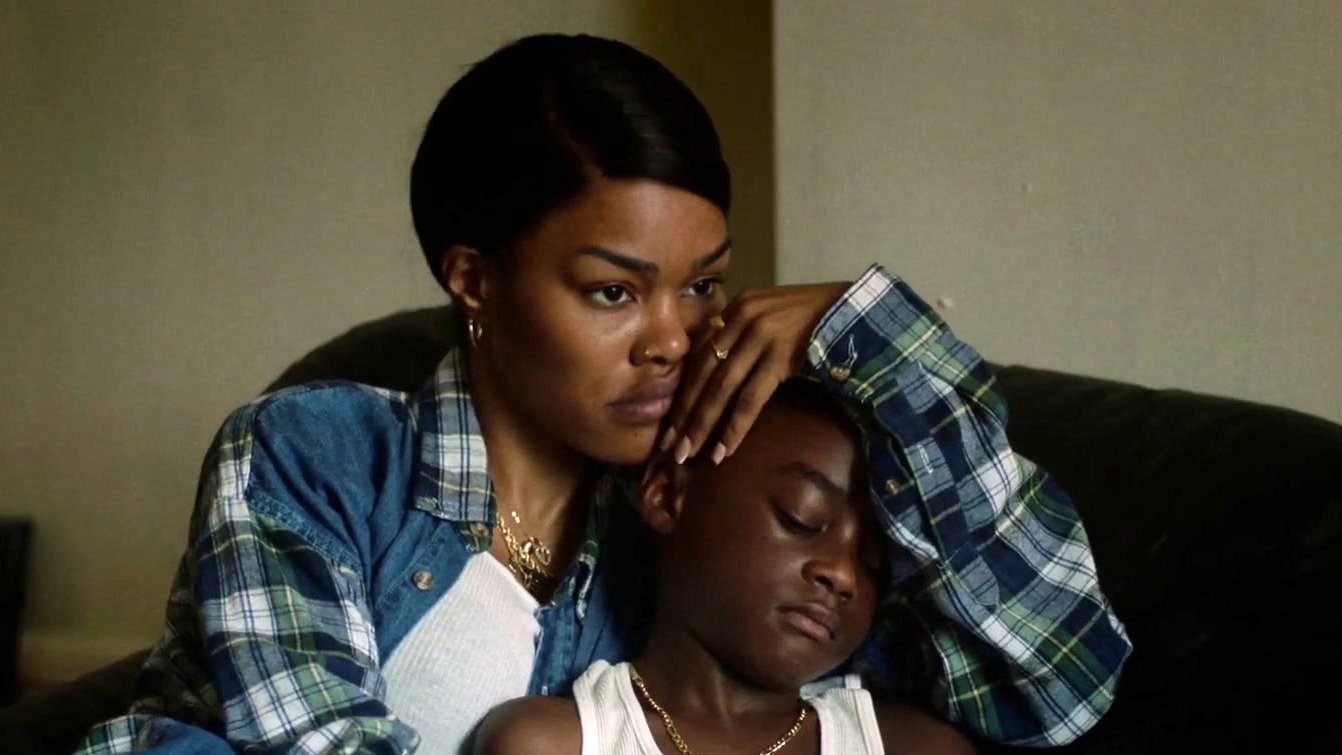A THOUSAND AND ONE
Directing: A
Acting: A
Writing: A
Cinematography: A
Editing: A
The film industry has such a long history of churning out mediocrity and retreads of the same tired concepts, there are times when one wonders if it’s even possible for anyone to come up with anything original anymore. And then, every once in a while, a film comes along with such a singular vision that it can restore faith in the power and potential of cinema.
A Thousand and One is one of those films. Rarely does such a vividly drawn portrait so effectively occupy the gray areas of life and history. In this case, writer-director A.V. Rockwell proves to be such a talent with a first feature film that I can’t even say she has potential. She’s already realized it. I can only say that I already breathlessly await whatever she makes next, and if she doesn’t have a vastly accomplished career ahead of her, we will have all been criminally deprived.
I loved everything about this movie, which is set in New York City in three different parts: 1994, 2001, and 2005. Rockwell isn’t so much interested in specific pivotal moments in New York historty—no mention of 9/11 here—as she is painting a portrait of a city in flux, bringing changes that do no favors to the characters on whom she focuses. A Thousand and One, whose title refers to the apartment number where young mother Inez (Teyana Taylor, a revelation of rough screen chemistry) and her son Terry live, is packed with establishing shots of Manhattan and Harlem, many of them high drone shots, for once never used to show off. Each shot serves the story here, giving us a sense of place, along with carefully curated clips of mayor speeches of the time. We hear pontifications on so-called “improving people’s lives,” while we see, for instance, a young teen Terry become subject to the city’s infamous “stop and frisk” program.
It’s rare that I am this impressed by a film’s overall casting, but it must be called out here. Terry is depicted by three different young actors: Aaron Kingsley Adetola as him at six years old; Aven Courtey at thirteen; Josiah Cross at seventeen. Each actor has a distinct manner and presence, and yet they perfectly complement each other as the same character at different ages, different stages of his development as a quiet, withdrawn young man, almost embarrassed by his own intellect. I was deeply impressed by all of them.
Still, Teyana Taylor is the star performer here, from the jump as a young mother who, instead of leaving her son to the foster care system, takes him home with her shortly after her release from jail. We learn she is 22 years old, and as an older woman gives her a break and rents a room to her, she admonishes her to “act like an adult.” All I could think about is how young 22 really is. Inez makes decisions that are very bad on paper, but are easy to empathize with.
And then: while we rightly expect the abduction of the young boy to bring quickly tragic consequences—we actually see Terry grow up with her. Over time, the building begins to crumble with age. The single White character with any real lines is a new landlord who is deceptively helpful at first, ultimately telling Inez she’ll need to “clear out” for a month or two in order for the necessary repairs to get done.
Near the end, A Thousand and One takes a shocking turn that I truly did not see coming, and which poses a sudden challenge to that aforementioned easy empathy. Things aren’t quite as surprisingly simple as it seemed to be, for eleven years. It’s rare that a film covering such a time span is so precisely well told, but editors Sabine Hoffman (Passing) and Kristan Sprague (Judas and the Black Messiah) are masters of their craft.
This film features characters audiences never get to see in cinema, lived-in neighborhoods of Black communities with multidimensional individuals as compelling as they are flawed, earnest and uncertainly principled, both products of and transcendent of their environments. Terry finds himself with a stepfather who is clearly much older than Inez, named Lucky (William Catlett), who makes some very common mistakes but is never villainized. He is only ever nurturing toward Terry, and you can’t help but root for the relationships between all three of these characters to work out in one way or another.
Out of everyone, it’s Inez who comes closest to being a villain, and yet we seem to understand every decision she makes, even potentially dangerous ones. A Thousand and One isn’t quite a tale of redemption, but rather one of hard-won love and affection. “Damaged people don’t know how to love each other,” Inez says to Lucky. “That’s all.” Except there’s more love around her than she realizes, and plenty to go around for films like this one.
Broken people try to keep their creations intact.
Overall: A

